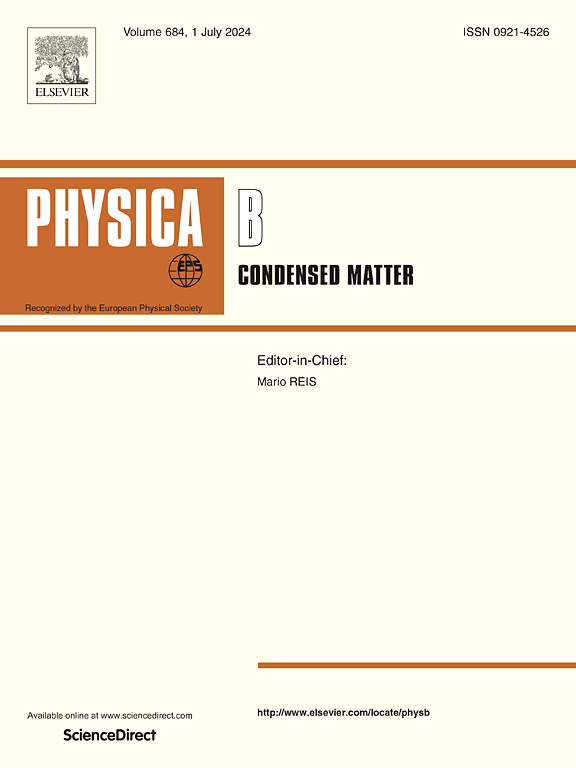First-principles investigation of interstitial solute effects on stacking fault energies in Nickel
IF 2.8
3区 物理与天体物理
Q2 PHYSICS, CONDENSED MATTER
引用次数: 0
Abstract
Interstitial elements play a complex role on shear deformation in Ni, however, current experimental techniques face limitations in observing interstitial elements distribution and their interaction with the micro-structures in Ni. In this work, first-principles calculations have been used to investigate solubility behaviors of interstitial solutes (H, B, C, N, and O) in bulk Ni with the variables of component and strain. Moreover, the solute segregation behaviors at the stacking faults and their effects on stacking fault energies have been evaluated with a focus on the H-induced localized plasticity phenomenon, while H-X solute pair competitions in Ni has also been discussed in detail. Finally, the variations of shear moduli and stacking fault energies of Ni with the presence of interstitial solutes have been evaluated and their correlation has been proposed. The results revealed a strong effect of volumetric strain on interstitial solute segregation in Ni, while stacking faults acted as potential traps for interstitial solutes. The H-induced localized plasticity has also been proved in terms of stacking fault energy. Our findings aim to contribute to the development of strategies to strengthen Ni alloys that are utilized in the complex chemical environment, thereby mitigating shear failure and enhancing the critical shear stress of Ni alloys.
间隙溶质对镍层错能影响的第一性原理研究
间隙元素在Ni的剪切变形中发挥着复杂的作用,然而,目前的实验技术在观察间隙元素的分布及其与Ni微观结构的相互作用方面存在局限性。在这项工作中,第一性原理计算已被用于研究具有组分和应变变量的空隙溶质(H, B, C, N和O)在大块Ni中的溶解度行为。此外,研究了层错处的溶质偏析行为及其对层错能的影响,重点讨论了h诱导的局部塑性现象,并详细讨论了Ni中H-X溶质对的竞争。最后,对Ni的剪切模量和层错能随间隙溶质的存在的变化进行了评价,并提出了它们之间的相关性。结果表明,体积应变对镍中溶质的偏析有很强的影响,而层错则是溶质的潜在陷阱。从层错能的角度也证明了h诱导的局部塑性。我们的研究结果旨在为开发在复杂化学环境中使用的Ni合金的强化策略做出贡献,从而减轻Ni合金的剪切破坏并提高其临界剪切应力。
本文章由计算机程序翻译,如有差异,请以英文原文为准。
求助全文
约1分钟内获得全文
求助全文
来源期刊

Physica B-condensed Matter
物理-物理:凝聚态物理
CiteScore
4.90
自引率
7.10%
发文量
703
审稿时长
44 days
期刊介绍:
Physica B: Condensed Matter comprises all condensed matter and material physics that involve theoretical, computational and experimental work.
Papers should contain further developments and a proper discussion on the physics of experimental or theoretical results in one of the following areas:
-Magnetism
-Materials physics
-Nanostructures and nanomaterials
-Optics and optical materials
-Quantum materials
-Semiconductors
-Strongly correlated systems
-Superconductivity
-Surfaces and interfaces
 求助内容:
求助内容: 应助结果提醒方式:
应助结果提醒方式:


